|
U.S.S. MONITOR UNION IRONCLAD |
|
Our second Limited Edition Sculpture features the Ironclad that revolutionized naval warfare. The picture above shows the U.S.S. MONITOR as it appeared during its historic battle with the C.S.S. VIRGINIA. Its decks are cleared for action. The picture below depicts it as it would have appeared on the James River after its historic battle but before its pilot house was improved. The artists superb detailing takes you back to the ship that changed naval warfare.
The sculpture can be ordered in either configuration. |
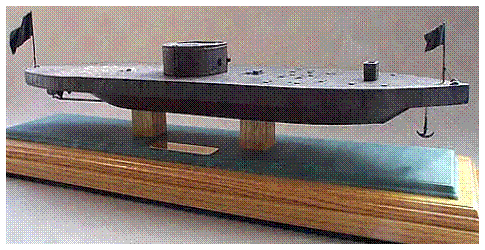
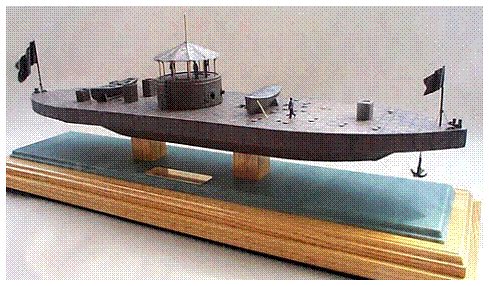
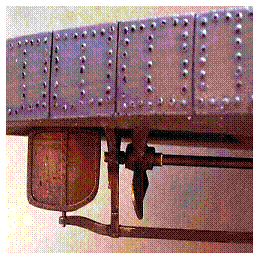
|
STERN DETAIL |
|
Cold Cast Bronze - Edition of 50 Length 28" x Width 6" x Height 7" Oak base measures 30" x 8" Height including base is 10" Weight 26 lb. $1300 plus shipping |
|
Hot Cast Bronze - Edition of 10 Length 28" x Width 6" x Height 7" Oak base measures 30" x 8" Height including base is 10" Weight 50 lb. $5500 plus shipping |
|
TURRET DETAIL |
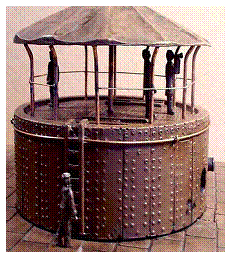
|
HISTORICAL INFORMATION
At the start of the Civil War the north recognized the importance of ironclad ships. In his first report to Congress, on July 4, 1861, Gideon Wells, Secretary of the Navy, referred to the importance of ironclad steamers and how expensive they would be to build. He asked for permission to appoint a board to study the subject. On September 16, the new board accepted 3 proposals for construction contracts. The first 2, were the GALENA and NEW IRONSIDES. The third was almost not built.
In early September, Wells visited C.H. Bushnell, the builder of the GALENA. He showed the design of the MONITOR to wells who was so impressed that he arranged a meeting with the board and Bushnell to present the design. Wise to the ways in Washington, Bushnell arranged a meeting with President Lincoln and showed the design to him first. He was so impressed that he went to the board meeting with Bushnell. After a long discussion, President Lincoln closed the meeting with one of his quips:
"All I have to say is what the girl said when she stuck her foot into the stocking, It strikes me there is something in it."
The board was still quite cool to the idea so another meeting was set up with the designer, John Ericsson. After meeting with the board and convincing them his ship would work, he was finally given a contract and told to immediately start construction.
The design, which was initially offered to the French, was simple but revolutionary. It consisted of two major parts, the outer deck (179 x 41) feet and the inner hull (126 x 34) feet. It had a draft of only 11 feet. The overhanging armored deck (4.5" on the sides and 2" on top) projected only 18" above the waterline, protecting the crew and engines. By centering the heavily armored revolving gun turret (10.5 feet high) on the hull, the ship became very seaworthy.
The keel was laid on October 25, 1861 at Howland Shipyard, Greenpoint, Long Island. The engines and turret were subcontracted to other firms so everything was built at the same time. The engines were installed and tested on December 30, and she was launched on January 30, 1862. The turret and its guns (new 11" Dahlgren Smooth bores) were installed last. The ship was completed on February 15. After three short trials, where numerous problems were found and repaired, she was commissioned on February 25 under the command of John L. Worden.
On March 6 the MONITOR was ordered to Hampton Roads on her way to join Admiral Farraguts fleet in New Orleans. The rest was left to history. Her chance engagement with C.S.S. VIRGINIA changed naval warfare forever.
SPECIFICATIONS |
|
________________________________________________________________ |

|
Sculptures |
|
________________________________________________________________
C.S.S. ALBEMARLE IRONCLAD RAM |
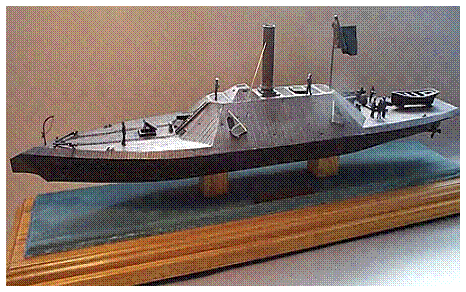
|
Cold Cast Bronze - Edition of 50 Length 28" x Width 6" x Height 7" Oak base measures 30" x 8" Height including base is 10" Weight 26 lb. $1300 plus shipping ________________________ Hot Cast Bronze - Edition of 10 Length 28" x Width 6" x Height 7" Oak base measures 30" x 8" Height including base is 10" Weight 50 lb. $5500 plus shipping |
|
A Signed and Numbered Certificate of Authenticity accompanies each sculpture. |
|
BOW DETAIL |

|
AFT DECK DETAIL |

|
FOR WARD GUN DETAIL |

|
HISTORICAL INFORMATION
The C.S.S. ALBEMARLE was built by hand in a corn field along the Roanoke River near Scotland Neck, North Carolina. At approximately 3:45 a.m. on April 19, 1864, the ALBEMARLE engaged two Union ships near Plymouth. The MIAMI, a double ended gunboat and the SOUTHFIELD, a former ferryboat. The ALBEMARLE rammed the SOUTHFIELD and sank her in just 5 minutes. The MIAMI headed down river for safer waters.
On May 5, while steaming in Albemarle Sound, the ALBEMARLE again engaged the Federal Navy. The 7 U.S. vessels combined armament was 34 guns as compared to the rams' 2 rifles. The engagement began about 4:45 p.m. and ceased near 7:00 p.m. when the Union flagship hoisted Cease Fire signals. The ALBEMARLE was battered but not defeated. On the night of October 27, 1864, the Confederate ram was sunk when Lt. William B. Cushing, U.S.N., planted a charge under her keel. The explosion blew a hole in the hull, sinking the ironclad.
The sculpture depicts the ironclad ram C.S.S. ALBEMARLE as she appeared after her engagement on May 5, 1864. The dents to her armour are clearly visible on her casemate. Her damaged but still usable stern 6.4" Brooke rifle can be seen protruding from her aft gun port. On deck the crew is busy replenishing supplies and repairing the damage.
SPECIFICATIONS |
|
Type - Albemarle Class - casemate ironclad Builder - Gilbert Elliott, Edwards Ferry, N.C. Dimensions - 152 x 34 x 9 (feet) Machinery - 2 Horizontal non-condensing engines with two screws Speed - 4 Knots Displacement - 376 ton Armament - (2) 6.4" Brooke Rifles Complement - 150 men Armor - 6" iron plating |
|
LAYAWAY PLANS ARE AVAILABLE ON ANY ITEM For information - E-MAIL or call 352 245-2922 ________________________________________________________________
HOME PAGE II NEW ADDITIONS II CITY SCENES II BATTLE SCENES II CW MODEL KITS
SHIPS OF WAR II GREAT LAKES ART II SCULPTURE II ORIGINAL ART GALLERY II LANDSCAPES II CW SHIP KITS
WILDLIFE ART II MAIL IN ORDER FORM II RELATED LINKS II ABOUT THE ARTIST II E-MAIL II WEAPONS OF WAR
WRM GRAPHICS - 13073 SE 97th Terrace Rd. - Summerfield, FL 34491 - (352) 245-2922 |
|
Type - Monitor Builder - Continental Iron Works, Greenpoint, NY Dimensions - (179 x 41.5 x 10.5) feet Machinery - 1 screw with 2 Ericsson vibrating-lever engines Speed - 9 Knots Displacement - 987 tons Armament - 2-11" Dahlgren smooth bores Complement - 49 men Armor - 8" on the turret, 4.5" on the sides, 2" on the deck, and 9" on the pilot-house |